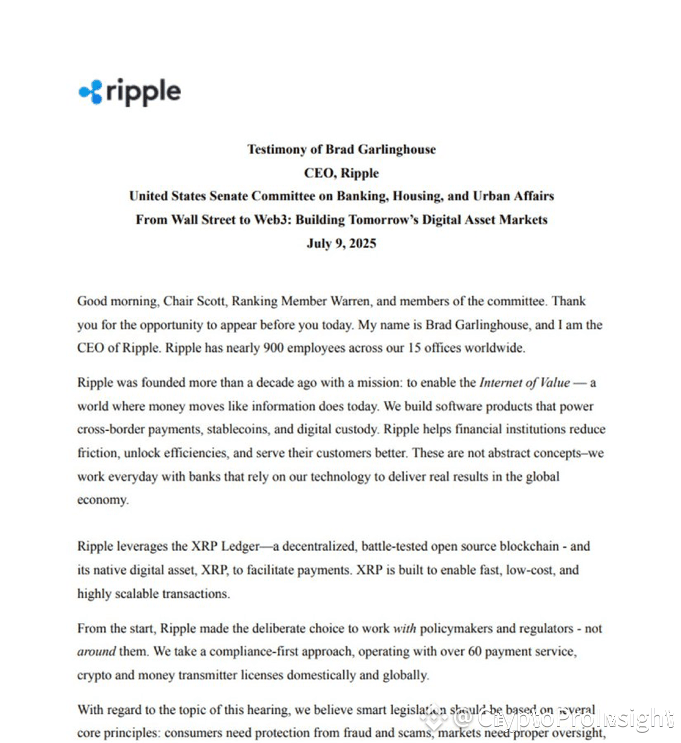🔹 Key Points from the Testimony:
Ripple’s Mission:
Founded over a decade ago to enable the "Internet of Value"—making money move as easily as information.
Builds software for cross-border payments, stablecoins, and digital custody.
Ripple works with banks and financial institutions to reduce friction and increase efficiency in financial systems.
XRP Ledger:
A decentralized, open-source, battle-tested blockchain.
Uses XRP, a native digital asset, to facilitate low-cost, fast, and scalable payments.
Highly efficient for global transactions.
Compliance & Policy Engagement:
Ripple chooses to collaborate with regulators and policymakers.
Operates with a compliance-first mindset, with over 60 payment service and crypto licensing approvals globally.
Policy Recommendations:
Urges smart, clear legislation to protect consumers from scams and ensure transparency.
Emphasizes the need for oversight without stifling innovation.
💡 Insights About XRP:
Utility Focus: XRP is not just a speculative asset—it’s built for real-world utility in global payment systems.
Institutional Integration: Ripple has strong institutional partnerships, giving XRP practical use beyond retail trading.
Regulatory Strategy: Ripple is positioning XRP as a compliant digital asset, aiming for long-term legitimacy through active engagement with regulators.
Scalability & Efficiency: XRP Ledger offers high throughput and low transaction costs, making it ideal for enterprise-grade financial solutions.
Global Reach: With nearly 900 employees in 15 offices, Ripple shows serious global expansion and infrastructure, differentiating it from smaller blockchain projects.
🚀 Investment Insight (if trading XRP):
Bullish signals may arise if U.S. regulation begins recognizing XRP as a utility token.
Institutional usage and global partnerships add long-term value to XRP’s fundamentals.
Keep an eye on policy developments—Ripple’s compliance-first approach may give XRP a regulatory edge over competitors like SOL or ADA. Not financial Advice





